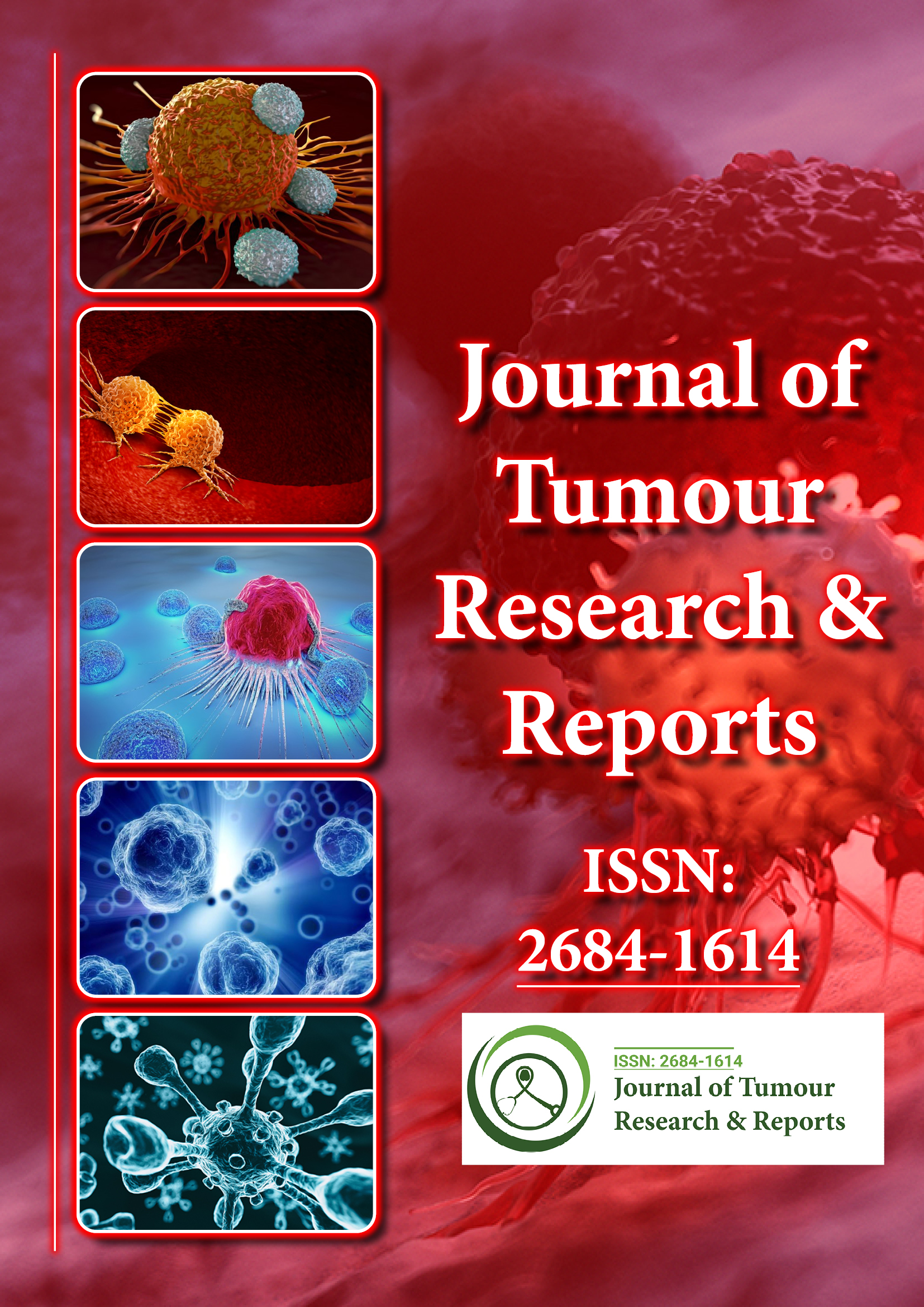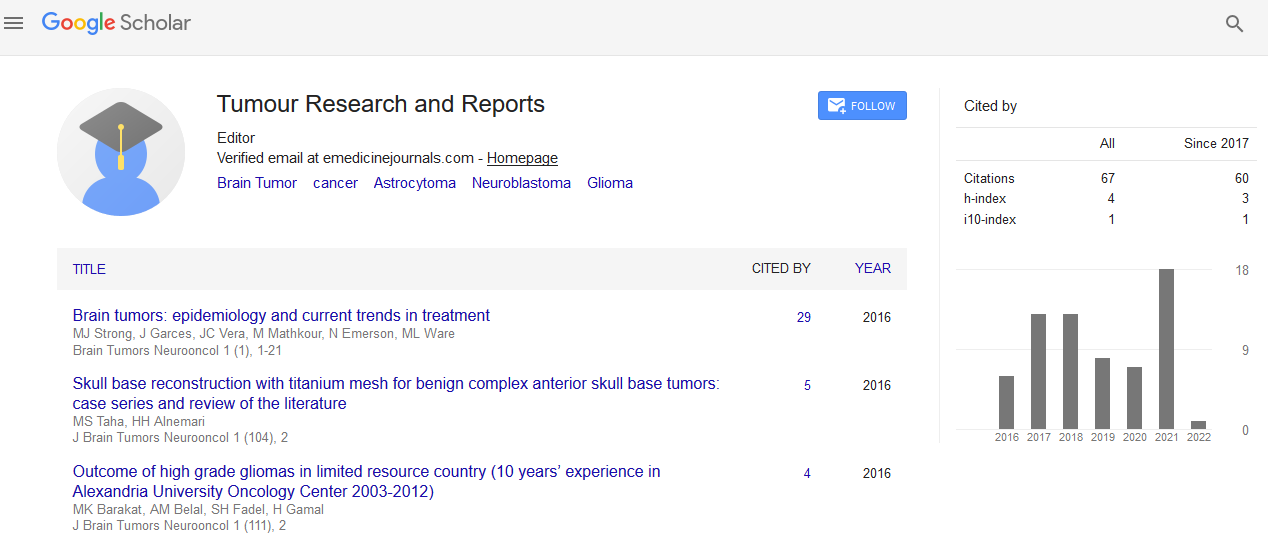Indexed In
- RefSeek
- Hamdard University
- EBSCO A-Z
- Google Scholar
Useful Links
Share This Page
Journal Flyer

Open Access Journals
- Agri and Aquaculture
- Biochemistry
- Bioinformatics & Systems Biology
- Business & Management
- Chemistry
- Clinical Sciences
- Engineering
- Food & Nutrition
- General Science
- Genetics & Molecular Biology
- Immunology & Microbiology
- Medical Sciences
- Neuroscience & Psychology
- Nursing & Health Care
- Pharmaceutical Sciences
Opinion Article - (2023) Volume 8, Issue 4
Innovative Therapies for Ovarian Cancer: Targeting Stem Cells
Patricia Polazzi*Received: 14-Nov-2023, Manuscript No. JTRR-23-23185; Editor assigned: 17-Nov-2023, Pre QC No. JTRR-23-23185 (PQ); Reviewed: 01-Dec-2023, QC No. JTRR-23-23185; Revised: 08-Dec-2023, Manuscript No. JTRR-23-23185 (R); Published: 15-Dec-2023, DOI: 10.35248/2684-1614.23.8:206
Description
Ovarian cancer is a formidable adversary in the realm of women's health. It is often diagnosed at an advanced stage, making it one of the fatal gynecological malignancies. Despite advances in treatment options, the overall survival rate for ovarian cancer remains disappointed. However, recent research has unveiled a potential avenue for the development of more effective treatments: ovarian cancer stem cells. These exclusive cells play a pivotal role in tumour initiation, progression, and resistance to conventional therapies.
The enigma of ovarian cancer stem cells
Cancer Stem Cells (CSCs), also known as tumour-initiating cells, are a small subset of cells within a tumour with self-renewal capacity and the ability to give rise to various cell types found in the tumour mass. In the context of ovarian cancer, these cells are believed to originate from either ovarian surface epithelium or fallopian tube epithelium. Ovarian CSCs exhibit unique properties that set them apart from the bulk of tumour cells, and these properties are central to their role in tumour progression and therapy resistance.
Characteristics of ovarian cancer stem cells
Self-renewal: Ovarian CSCs have the remarkable ability to self- renew, allowing them to maintain a continuous population within the tumour. This characteristic makes them responsible for the long-term growth and persistence of ovarian tumours.
Differentiation: These stem cells can give rise to diverse cell types present in the tumour, contributing to tumour heterogeneity. This plasticity allows them to adapt to different microenvironments and evade therapies targeting specific cell types.
Chemo resistance: Ovarian CSCs are inherently resistant to conventional chemotherapy, making them a major contributor to treatment failure and disease recurrence. They possess efficient DNA repair mechanisms and drug efflux pumps that protect them from the toxic effects of chemotherapy drugs.
Tumour initiation: Ovarian CSCs are believed to be the culprits behind tumour initiation and growth. Even when a majority of tumour cells are eliminated during treatment, the presence of CSCs can lead to relapse and metastasis.
Microenvironment interaction: These stem cells interact closely with the tumour microenvironment, including immune cells, fibroblasts, and blood vessels, to create a supportive function that promotes their survival and proliferation.
Targeting ovarian cancer stem cells
The discovery of ovarian CSCs has opened up new avenues for cancer therapy. Targeting these cells directly could potentially lead to more effective treatments and improved outcomes for ovarian cancer patients.
Novel therapeutics: Developing therapies specifically designed to target ovarian CSCs is a primary focus of ongoing research. These therapies aim to disrupt the unique characteristics of CSCs, such as their self-renewal capacity and chemo resistance. Potential drugs and drug candidates are currently under investigation in preclinical and clinical studies.
Immunotherapy: By utiliing the power of the immune system to target ovarian CSCs is another potential approach. Immunotherapies, such as immune checkpoint inhibitors and Chimeric Antigen Receptor (CAR) T-cell therapy, have shown potential in eliminating CSCs and enhancing the overall anti- tumour immune response.
Drug combinations: Combining traditional chemotherapy with targeted therapies that specifically address ovarian CSCs is a strategy that holds potential. This approach seeks to eliminate the bulk of tumour cells while also targeting the resistant CSC population.
Biomarker discovery: Identifying specific biomarkers unique to ovarian CSCs is significant for their accurate detection and targeted therapy. Researchers are actively working on identifying these markers to enable more precise diagnosis and treatment.
Ovarian cancer stem cells represent a key component in understanding the complexity of ovarian cancer. Their unique characteristics and pivotal role in tumour initiation, progression, and therapy resistance make them an attractive target for innovative cancer therapies. There is still a lot of research to be done in order to completely understand the problems with ovarian CSCs. Ongoing research and clinical trials hold potential of assist in the new era of more effective treatments and improved outcomes for ovarian cancer patients.
Citation: Polazzi P (2023) Innovative Therapies for Ovarian Cancer: Targeting Stem Cells. J Tum Res Reports. 8:206.
Copyright: © 2023 Polazzi P. This is an open access article distributed under the terms of the Creative Commons Attribution License, which permits unrestricted use, distribution, and reproduction in any medium, provided the original author and source are credited.

